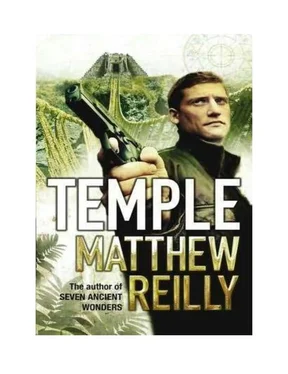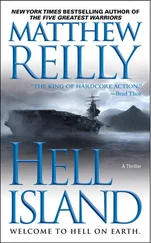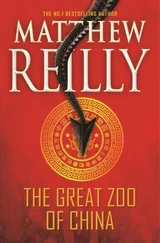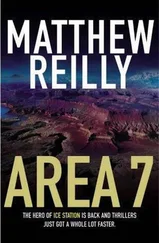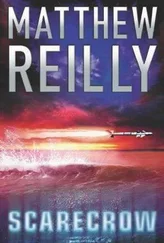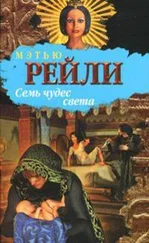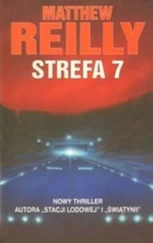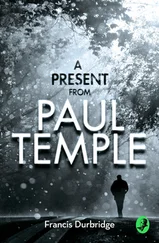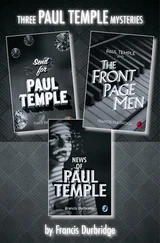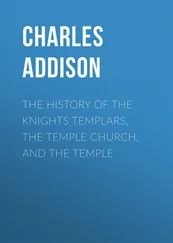‘All right,’ he said, ushering them inside the cargo plane.
‘Time to get this show on the road.’
The giant cargo plane thundered down the runway and off into the rain soaked sky.
It was a Lockheed C-130E Hercules and the interior was divided into two sections—the downstairs cargo hold and the upstairs passenger compartment. Race sat in the upstairs section with the five other scientists going along on the expedition. The six Green Berets accompanying them were down in the cargo hold, stowing and checking their weapons.
Of the five civilians, Race knew two: Frank Nash and Lauren O’Connor.
‘We’ll have time for introductions later,’ Nash said, sit-ring down next to Race and hauling the briefcase onto his lap. ‘What’s important right now is that we set you to work.’
He began unclasping the buckles on the briefcase.
‘Can you tell me where we’re going now?’ Race asked.
‘Oh yes, of course,’ Nash said. ‘I’m sorry I couldn’t tell you before, but your office just wasn’t secure. The windows could have been lased.’
‘Lased?’
‘With a laser-guided listening device. When we speak inside an office like yours, our voices actually make the windows vibrate. Most modern office towers are equipped to deal with directional listening devices—they have electronic jamming signals running through the glass in their windows. Older buildings like yours don’t. It would have been way too easy for someone to listen in.’
‘So where are we going?’
‘Cuzco, Peru-capital of the Incan empire before the Spanish conquistadors arrived in 1532,’ Nash said. ‘Now it’s just a large country town, a few Incan ruins, big tourist attraction, so they tell me. We’ll be travelling non-stop, with a couple of mid-air refuellings on the way.’
He opened the briefcase and extracted something from it.
It was a stack of paper—a loose pile of A3 sheets, maybe forty pages in total. Race saw the top sheet. It was a Xerox of an illustrated cover sheet.
It was the manuscript Nash had spoken about earlier, or at least a photocopy of it.
Nash handed the stack of paper over to Race and smiled.
‘This is why you are here.’
Race took the pile from him, flipped over the cover sheet.
Now, Race had seen medieval manuscripts before—manuscripts painstakingly reproduced by hand by devoted monks in the Middle Ages, back in the days before the printing press. Such manuscripts were characterised by an almost impossible intricacy of design and penmanship: perfect calligraphy-including wonderfully elaborate leading marks (the single letter that starts a new chapter)—and detailed pictographs in the margins that were designed to convey the mood of the work. Sunny and gay for pleasing books; dark and frightening for more sombre tales. Such was the detail, it was said that a monk could spend his entire life reproducing a single manuscript.
But the manuscript that Race saw now even in blackand-white photocopied form—was like nothing he had ever seen.
It was magnificent.
He flicked through the pages.
The handwriting was superb, precise, intricate, and the side margins were filled with drawings of gnarled snaking vines. Strange stone structures, covered in moss and shadow, occupied the bottom corners of each page. The overall effect was one of darkness and foreboding, of brooding malevolence.
Race flicked back to the cover page. It read:
NAF,AT/O VERI/ PRIESTO IN RUR/$/NCAR//$: OPERIS ALBERTO
LIJ/S SANTIAGO ANNO DO.MIN/MDLXV
Race translated. The true relation of a monk in the land of the A manuscript by Alberto Luis Santiago. It was dated. Race turned to face Nash, ‘All right. I think it’s about time you told me what this mission of yours is all about.’
Nash explained.
Brother Alberto Santiago had been a young Franciscan missionary sent to Peru. in 1532 to work alongside the conquistadors. While the conquistadors raped and pillaged the countryside, monks like Santiago were expected to convert the Incan natives to the wisdom of the Holy Roman Catholic Church.
Although it was written in 1565, well after Santiago’s eventual return to Europe,’ Nash said, ‘it is said that the Santiago Manuscript recounts an incident that occurred around 1535, during the conquest of Peru by Francisco Pizarro and his conquistadors. According to medieval monks who claimed to have read it, the manuscript recounts a rather amazing tale: that of Hernando Pizarro’s dogged pursuit of an Incan prince who, during the height of the siege of Cuzco, spirited the Incas’ most venerated idol out of the walled city and fled with it into the jungles of eastern Peru.’
Nash swivelled in his seat. ‘Walter,’ he said, nodding to the bespectacled, balding man sitting on the other side of the centre aisle, ‘help me out here. I’m telling Professor Race about the idol.” Walter Chambers got up from his seat and sat down opposite Race.
Chambers was a mousy little man, three-quarters bald and bookish, the kind of guy who’d wear a bow tie to work.
‘William Race. Walter Chambers,’ Nash said. ‘Walter’s an anthropologist from Stanford. Expert on Central and South American cultures—Mayans, Aztecs, Olmecs and, especially, the Incas.’
Chambers smiled. ‘So you want to know about the idol?’
‘It would seem so,’ Race said.
‘The Incas called it “the Spirit of the People”,’ Chambers said. ‘It was a stone idol, but one that was carved out of a strange kind of stone, a shiny black stone that had very fine veins of purple running through it.
‘It was the Incan people’s most prized possession. Indeed, they saw it as their very heart and soul. And when I say that, I mean it literally.
They saw the Spirit of the People as more than a mere symbol of their power. They saw it as the actual, literal, source of that power. And indeed, there were stories about its magical powers—how it could calm the most vicious of animals, or how, when dipped in water, the idol would sing.’
‘Sing?’ Race said.
‘That’s right,’ Chambers said, ‘sing.’
‘O-kay. So what does this idol look like.’
‘The idol’s actual appearance has been described in many places, including the two most comprehensive works on the conquest of Peru, J6rez’s Relaci6n and de la Vega’s Royal Commentaries. But descriptions vary. Some say it was a foot high, others only six inches; some say it was beautifully carved and smooth to the touch, others say it had rough, sharp edges. One feature, however, is common to all descriptions of the idol—the Spirit of the People was carved in the shape of a snarling jaguar’s head.’
Chambers leaned forward in his seat. ‘From the moment he heard about that idol, Hernando Pizarro wanted it. And all the more so after the attendants at the idol’s shrine at Pachacimac whisked it away from under his nose. See, Hernando Pizarro was probably the most ruthless of all the Pizarro brothers to come to Peru. I imagine today we would call him a psychopath. According to some reports, he would torture whole villages on a whim—just for the sport it. And his hunt for the idol became an obsession. Village, town after town wherever he went he demanded to know the location of the idol. But no matter many natives he tortured, no matter how many villages he burned, the Incas wouldn’t tell him where their idol was. ‘But then—somehow—in 1535 Hernando discovered the idol was being kept. It was being kept inside a stone vault inside the Coricancha, the famous Temple of the Sun, situated in the centre of the besieged city of Cuzco. ‘Unfortunately for Hernando, he got to Cuzco just in time to see a young Incan prince named Renco Capac make off with the idol in a daring ride through the Spanish and Incan lines. According to those medieval monks who read it, the Santiago Manuscript details Hernando’s pursuit of Renco following the young prince’s escape from Cuzco—a dazzling chase that wound its way through the Andes and out into the Amazon rainforest.’
Читать дальше
